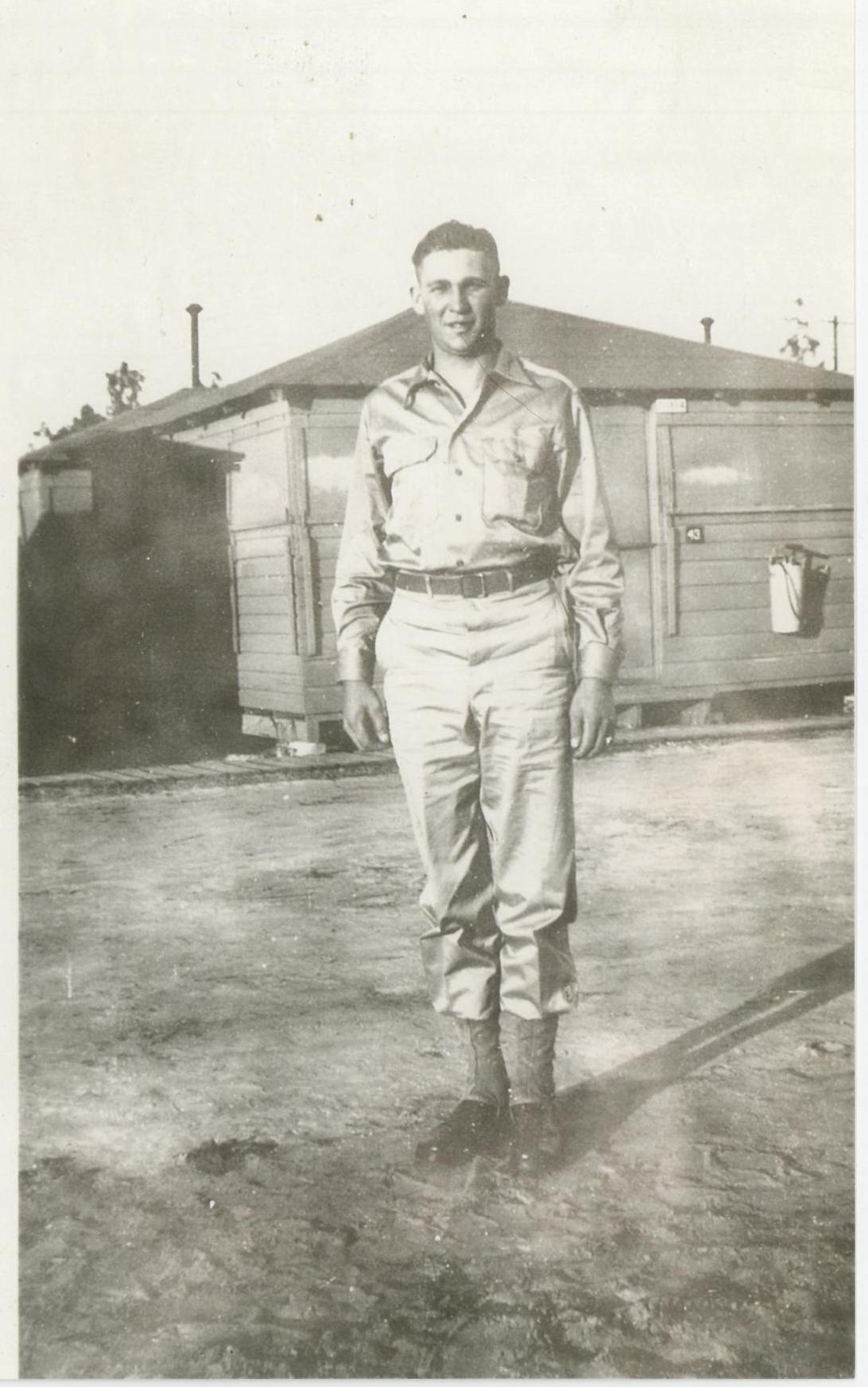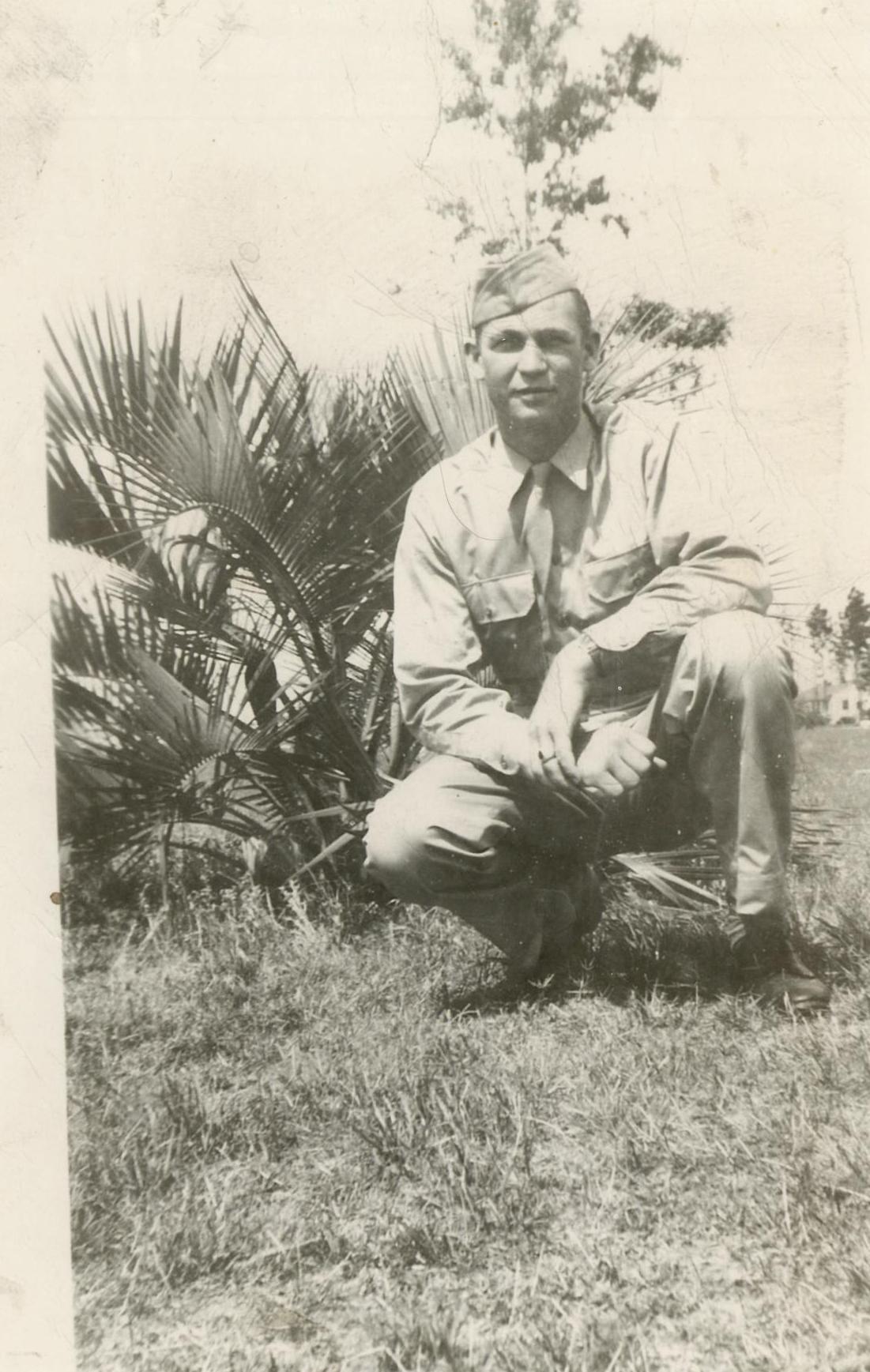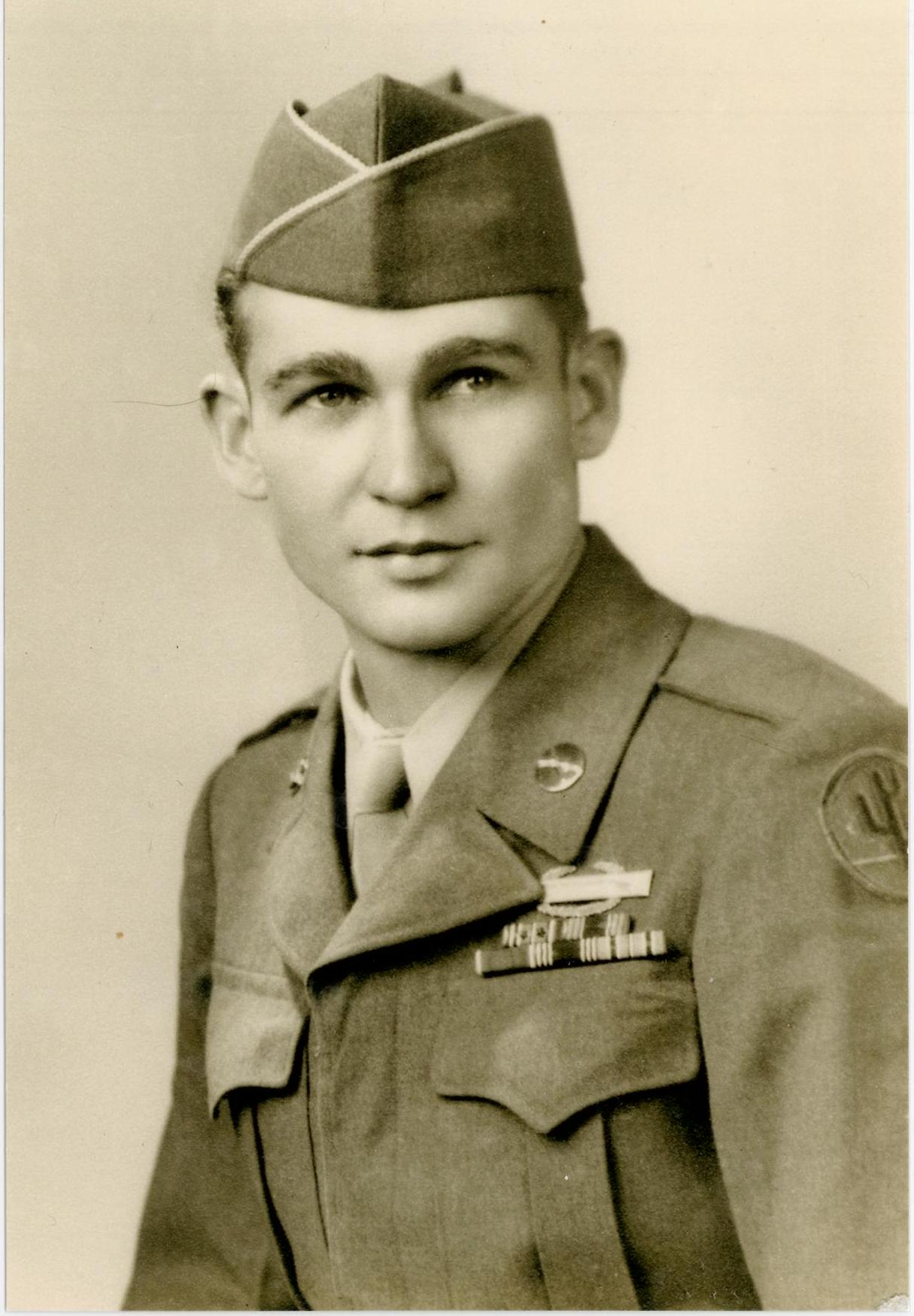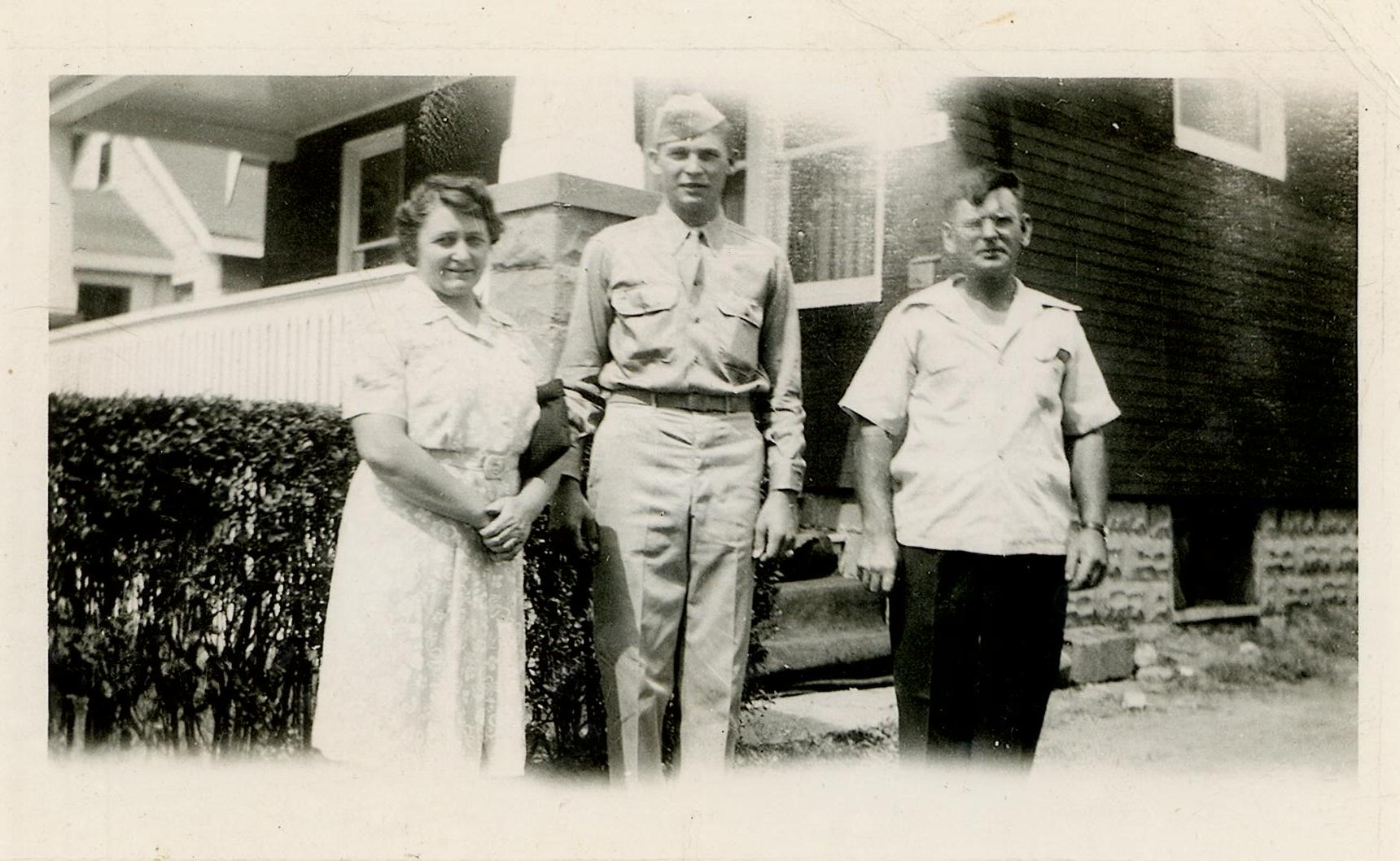103rd Cactus Division
|
103rd Cactus Division |
|
James Mulligan |
410th Company L
|
Shortly
after I reached my eighteenth birthday, I was inducted into the U.S.
Army. My basic training was in a motor mechanics school. After
completing basic training, I was sent to Fort Mead in Maryland to be
shipped overseas as a replacement. While there, those of us who werenít
19 yet were taken out because you could not be sent overseas as a
combatant younger than 19.
After
being sent to another camp temporarily, I was sent to join the 103d
Division in Texas. I was assigned to the motor pool as a mechanic. Then
one day the captain from the motor pool advised me that the motor pool
was over-strength and that I would be sent to a rifle company until we
were overseas and then I would return to the motor pool. I was never
returned to the motor pool. As I had never had infantry training, I was
at a disadvantage.
The
division sailed to Europe on troopships in October 1944. After a brief
stay in Marseilles, we were moved to the front lines and relieved the 3d
Division. We relieved them in the middle of a very dark night. The 3d
division had just captured that position that day. When daylight came, I
was shocked to see four dead Germans sprawled about the building. We
were told there was a dead GI in one of the foxholes outside. He ran for
his foxhole when mortar shells were coming in and one landed in his
foxhole.
We held
that position for about five days with very little food and being under
German mortar fire as we moved about outside. The people in the grave
detail would not come to the front lines to pick up the dead GI. So we
improvised a litter and carried him back. The stench of that body stayed
with me for a long time.
On the
fifth day at dawn, our other regiment attacked through us and across an
open valley.[1]
All hell broke loose. They were covered by artillery, mortar, and
machine gun fire. After their attack, the valley was littered with
killed and wounded GIs. That was my baptism into combat. I was scared
stiff seeing all of these soldiers under fire and the mortar and
artillery being shot at us.
We
continued to advance through France and I was amazed at how hardened a
person becomes to seeing people killed and wounded and just moving on.
In one incident just at dusk, we were attacked by mortar fire and
Sergeant Korte was running back to his foxhole when a mortar shell
landed right behind him. He was wounded very badly. There was an aid
station not far away; so we improvised a litter and carried him to the
aid station. By that time, it was very dark. I was at the right rear of
the litter and I knew he was dead. His foot was just dangling and I had
to keep putting his foot back on the litter. When we got to the aid
station, he was pronounced dead. A few years ago, his nephew called me
and asked if I knew what happened to his uncle. I became very emotional
and could barely explain to him what had happened to him.
There
were others killed and wounded along the way, but another traumatic
incident happened on January 25, 1945 at a village named Schillersdorf
in Alsace. It was bitterly cold and our company was dug-in in foxholes,
in battalion reserve outside of Schillersdorf, when German SS overran
the battalion that was holding the village. At dawn on January 25, 1945,
Lieutenant Raith ordered us out of our foxholes and to fix bayonets and
to retake Schillersdorf. As we moved across the valley toward the
village, we came under rifle fire. But we all made it into a courtyard.
There were probably about twenty of usóall that was left of our platoon.
As we all ran in single file across a street, each one of us was shot at
by the Germans. But we all made it into another courtyard. Some of the
men went behind the barn. One of them was shot in the forehead and died
instantly. Another was shot in the hand, another in the leg.
I
also went behind the barn, but was not hurt. I went into the house where
our lieutenant was with one of the wounded. Then Harold R. Carlson and I
in the lead headed back through the courtyard into the field behind the
barn when a tank shell landed, blowing my steel helmet off. I looked
back and Harold was down and I knew he was dead.
I
continued on to behind the barn and saw a column of tanks and infantry
coming our way. So I hurried back into the house to tell Lieutenant
Raith what I saw. He decided for us to retreat. So we took our wounded
and left Schillersdorf, leaving our dead behind.
No one
else knew what happened to Harold. To this day, I regret that I didnít
go back and make sure he was dead. I am the only person who knows how he
died and I wish I could have told his parents.
One of
our other platoons tried to retake the village from another side, but
they were pinned down on a hillside. I donít know how many escaped from
that ordeal, but I heard that some that were wounded froze to death
because no one could come to their aid.
The
front lines just set still for quite a while. Then on March 15, 1945,
our whole front line started a massive attack supported by a huge
artillery cover. Our battalion followed another battalion for a couple
of days. Then we relieved them in the middle of the night so we could
take over the attack. It was in dense woods and we were quite noisy. The
Germans could hear us and they kept shooting at the noise.
At
dawn, our captain told us to start the attack. I was the first scout and
I started advancing about 50 yards in front of my platoon. (The first
scoutís job is to draw enemy fire.) As I advanced along this heavily
wooded hillside, I could hear Germans talking, but I could not see them.
(I later learned that they were at a roadblock.) After a while, my
captain sent up word for me to stop advancing. At that time, a sniper
started shooting at me and barely missed. He kept shooting. I moved to
what I thought was a safer spot and that is when he hit me.
The
nearest village was Bobenthal, Germany. I still wake up at night with
thoughts that the sniper was just waiting for me to get a little closer
so he would have a better shot at me and I would be dead.
After I
was wounded, I spent about a year and a half in army hospitals. I still
take pills every night to ease the pain because of the wound so that I
can sleep.
The
time we spent in Europe was miserable. We slept in foxholes that filled
with water. The winter was the coldest that Europe had seen in many
years. It was difficult to dig a foxhole in the frozen ground. Our food
was K rations.[2]
I will never forget that experience.
Later,
when asked about my time in combat during World War II, I would become
so emotional that I would start crying and have trouble describing my
wartime experience. I didnít know what my problem was and why I would
start crying and shaking. It was very embarrassing and I thought I had a
mental problem.
Then
one day I went to see my service officer from the American Legion. That
person was not available that day; so, I asked the person on duty if I
could speak to him about the condition of my wound. After that
discussion, I told him I had another problem and I started crying. He
advised me to meet with a group of other World War II vets at a veterans
center in Dearborn, Michigan for counseling. I have been going to that
vet center for about four years and I find some comfort in meeting with
these World War II vets with similar problems with PTSD. |
||
 Home after the War |
 Basic Training |
 |
 Home on Leave with Mom and Dad June 1944 |
||